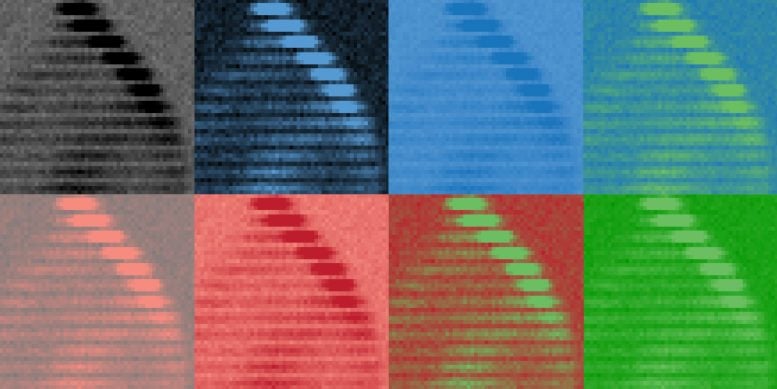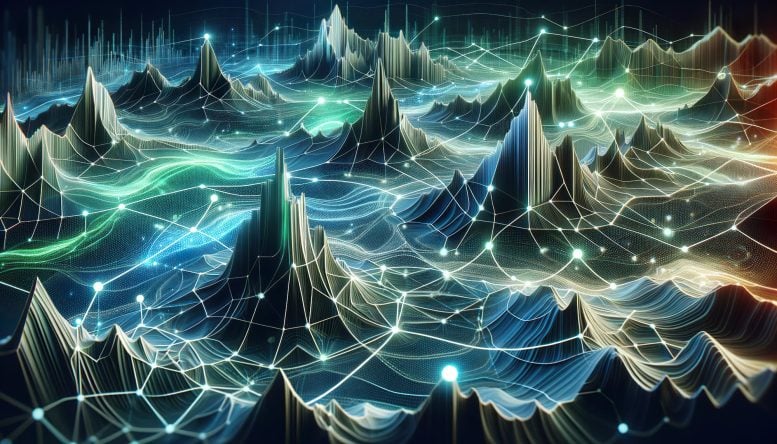Researchers have shown how magnetic fields can be used to manipulate topological effects in artificially constructed solids to turn particle interactions on or off, potentially paving the way for advances in quantum technology. Their experiments involving topological pumping in a system of cold fermion potassium atoms trapped in a laser-created lattice showed that these systems can robustly transport particles in predictable directions, even when encountering obstacles that reverse their motion. The same goes for time.
In general, it is recommended not to compare apples to oranges. However, in topology, a branch of mathematics, such comparisons are necessary. It turns out that apples and oranges are said to be topologically identical because neither has a hole – as opposed to a donut or a coffee cup, which both have a hole (the handle of the cup) and are, therefore, topologically equal.
In a more abstract way, quantum systems in physics can also have a specific apple or donut topology, which is reflected in the energy state and motion of the particles. Researchers are interested in such systems because their topology makes them resistant to disorder and other disturbing effects that are always present in natural physical systems.
Furthermore, things get particularly interesting if the particles in such a system interact, meaning they attract or repel each other, like electrons in solids. However, studying topology and interactions in solids simultaneously is extremely difficult. A research team at the Federal Institute of Technology in Zurich (ETH) led by Tilman Esslinger has now successfully detected topological effects in artificial solids, in which interactions can be turned on or off using magnetic fields.Their findings have just been published in the scientific journal sciencewhich can be used in quantum technology in the future.
Transfer by topology
Zijie Zhu, a doctoral student in Esslinger’s lab and first author of the study, and his colleagues built artificial solids using extremely cold atoms (fermion potassium atoms) that were trapped in a spatially periodic lattice by laser beams . Additional laser beams cause the energy levels of adjacent lattice sites to periodically move up and down, out of sync with each other. After some time, the researchers measured the positions of the atoms in the crystal lattice, which initially had no interactions with each other. In this experiment, they observed that a ring topology of energy states causes particles to be transported by one lattice site each time the cycle repeats, always in the same direction.

The work by researchers at the Federal Polytechnic Institute pays homage to Andy Warhol. This figure shows the experimental results of topological pumping.Image credit: Quantum Optics Group/ETH Zurich
“Think of it like a screw,” says Konrad Viebahn, a senior postdoc in Esslinger’s group. The tightening movement is a clockwise rotation about its axis, but the screw itself moves forward as a result. With each revolution, the screw advances a certain distance, which is independent of the speed at which the screw rotates. This behavior is also called topological pumping and is typical of some topological systems.
But what if the screw hits an obstacle? In the experiments by the ETH Zurich researchers, this obstacle was an additional laser beam, which restricted the atoms’ freedom to move longitudinally. After about 100 revolutions of the screw, the atoms seemed to hit a wall. In the analogy used above, the walls represent an apple topology where topological pumping cannot occur.
surprise return
Surprisingly, the atoms didn’t simply stop at the wall, but swerved. Therefore, the screw moves backwards even though it keeps turning clockwise. Esslinger and his team explained this regression through the presence of two donut topologies in the lattice—one with a donut that rotates clockwise, and the other with a donut that rotates in the opposite direction. At the walls, atoms can change from one topology to another, reversing the direction of their motion.
Now, researchers turned on the repulsive interactions between atoms to see what happened. They were surprised again: the atoms turned around at the invisible barrier before they even reached the laser wall. “Through model calculations, we were able to show that the invisible barrier is created by the atoms themselves by repelling each other,” explains doctoral student Anne-Sophie Walter.
The Qubit Highway of Quantum Computers
“With these observations, we have taken a big step towards a better understanding of interacting topological systems,” said Esslinger, who studied this type of technology in the framework of an advanced grant from the Swiss National Science Foundation (SNF). effect. Next, he wants to conduct further experiments to study whether the topological screws are as robust to disorder as expected, and how the atoms behave in two or three spatial dimensions.
Esslinger also considered some practical applications. For example, transporting atoms or ions through topological pumping could be used as a qubit highway to bring the quantum bits (qubits) in a quantum computer to the right location without heating them or disturbing their quantum properties. state.
Reference: “Inversion of quantized Hall drift at non-interacting and interacting topological boundaries” by Zijie Zhu, Marius Gächter, Anne-Sophie Walter, Konrad Viebahn and Tilman Esslinger, April 18, 2024 science.
DOI: 10.1126/science.adg3848
#Scientists #discover #surprising #reversal #quantum #system
Image Source : scitechdaily.com
